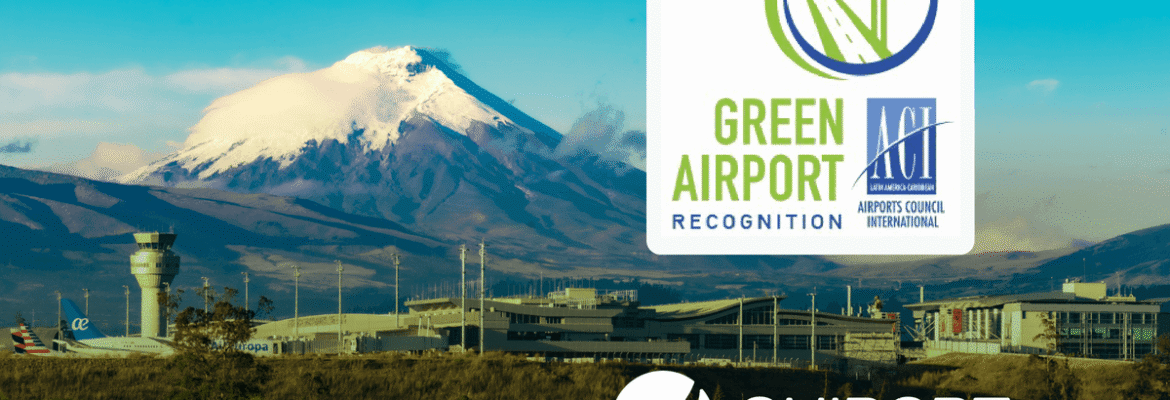Quito Airport is known for the symbiosis between biodiversity and air operations
• Instead of turning away wildlife, Quito Airport is coexisting with them – turning part of its grounds into a wildlife sanctuary.
• The “UIO Natural Laboratory” project transforms 150 hectares of airport land into a living space for conservation, environmental restoration and science.
• Reforested more than 72 hectares, planted 12,000 native trees, sequestered 400 tons of carbon dioxide annually, and released more than 160 wild animals.
Mariscal Sucre International Airport in Quito has received the Green Airport Award 2025, awarded by the Airports Council International for Latin America and the Caribbean (ACI-LAC), thanks to an innovative project developed by Corporación Quiport, entitled Laboratorio Natural UIO (Laboratory Natural UIO), which transforms part of the airport terminals Into a living space for conservation, restoration and science.
Natural Laboratory inside the Airport The Natural UIO Laboratory extends over 150 hectares within the airport concession area, where biodiversity is protected, restored and studied in harmony with air operations. Quiport developed this pioneering model in Mariscal Sucre – the first of its kind in Ecuador and one of the few in the world that achieves a safe coexistence between wildlife and aviation.
Unlike the traditional airport approach – which seeks to keep animals away for safety reasons – Quito has proven that nature can coexist harmoniously with air operations when there is proper planning, scientific monitoring, and responsible environmental management.
• Ecological recovery: Over the past decade, 72 hectares of Andean dry forests have been restored with native species, sequestering about 400 tons of carbon dioxide per year and replenishing essential ecosystem services.
• Biodiversity: More than 100 species, including endemic and endangered species such as the Keto marsupial frog, the Andean rabbit, and Söderström’s mouse, have been recorded for harvest.
• Applied research: Camera trapping studies and satellite monitoring have confirmed the presence of the Andean fox, with a home range of up to 7.8 square kilometres, indicating that the airport serves as a safe refuge for local species.
• Operational safety: The presence of birds of prey, such as owls, contributes to natural rodent control, reducing runway risks and demonstrating that surrounding wildlife can safely coexist with flight.
• Rehabilitation and release: In coordination with the Environment Agency, more than 160 rescued wild animals – including birds, squirrels and snakes – have been released in this area over the past two years.
• Education and Engagement: Airport staff and surrounding communities participate in citizen science and wildlife monitoring programs, strengthening the link between conservation and air operations.
Quiport’s Leadership in Airport Sustainability Under the leadership of Corporación Quiport, responsible for the overall management of Mariscal Sucre International Airport and the implementation of its environmental strategy, the airport has standardized a management model that combines operational safety, sustainability and environmental commitment.
This recognition adds to its history of regional leadership: it is Quiport’s third environmental project to receive Green Airport recognition from ACI-LAC, strengthening its position as the benchmark for airport sustainability in Latin America.
“Laboratorio Natural UIO is a source of pride for Quito and for the airport industry in Latin America,” said Ramon Miro, President and CEO of Quiport. “Since construction and the start of operations, Quiport has worked to understand the ecosystem in which we operate and design projects that work to restore and preserve it. I thank ACI-LAC for recognizing the initiatives that “It is being implemented by airports throughout Latin America and the Caribbean to protect the environment.”
“Quiport has shown that an airport can be a driver of connectivity and an ally of the environment,” added Rafael Echevarn, Director General of ACI-LAC. “At ACI-LAC, through the Green Airport Recognition Program, we celebrate its commitment to integrating biodiversity and implementing nature-based solutions, reflecting the purpose of our initiative – to promote a more sustainable and environmentally conscious aviation sector in America.” Latin and the Caribbean.” A Model for Sustainable Aviation The honor was presented during the ACI-LAC 2025 Annual Association, Conference and Exhibition, held in Trinidad and Tobago, which brought together airport industry leaders from across the region.
